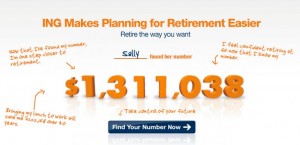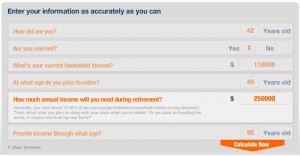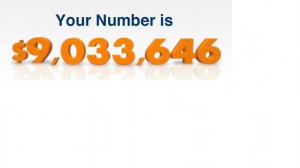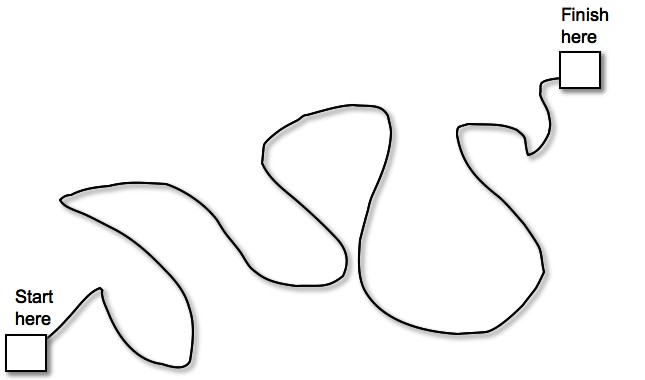Scott has placed an ad on Craigs List:
WANTED: A very successfully run healthcare practice, specializing in spinal rehabilitation, exercise, massage therapy as well as other holistic services such as nutritional advice and expertise. Professionally run to the highest of clinical standards with a well-trained, goal-oriented staff, necessary equipment and supplies. Low monthly overhead, time-proven practice and business design system already in place, extremely high cash-flow and yearly profit margins, ongoing community marketing programs in place, all in a state and local community that harbors terrific heath insurance coverage for these services. Totally turn-key, fully developed business design, everything from new employee training techniques, to patient marketing, to patient scheduling, to treatment programs and proven care systems are all in place and can be duplicated, expanded upon and repeated in additional clinic ventures and startups time and again. The commercial property that the clinic resides in may also be purchased in addition to the business at reasonably assessed property value and additional rents may be collected by adjoining business that resides in the same building, once building is purchased.
Now, this isn’t a real ad, and Scott didn’t really place it, you see he has a dilemma and is trying to solve it right here.
Let me bring you up to date … … Scott is a doctor – living on a beautiful country estate with his young family (and, a couple of horses!); his savings ethic is an inspiration (Scott saves around 50% of his reasonably high salary).
Now, Scott is a partner in his small medical practice (one that specializes in non-traditional forms of healing, even though Scott and his partner are qualified medical doctors) and he has wonderful altruistic dreams of one day being able to spend the bulk of his time helping the underprivileged in the US and overseas to receive the highest quality medical care that he can offer.
For Scott, this means eventually putting his practice on ‘autopilot’ so that he can:
(a) bring in more ‘pro bono’ patients (as many as he can handle without the practice going broke!), and
(b) take extended periods off to travel to 3rd world countries dispensing his unique brand of medical assistance.
Scott’s worked out that he needs around $4,000,000 in 8 to 10 years, and then he should be able to implement his plan.
The good news is that Scott’s partner is set to hand him 100% of the medical practice in 30 months time (Scott’s only ‘investment’ is the work that he puts in between now and then) …
… this, along with Scott’s aggressive savings-and-frugality-strategy should put Scott smack on target in 8.5 years! Scott’s dilemma is:
1. Should he just stay the course, and trust everything to work out … worst case: work for another few years, if some of his assumptions should prove incorrect?
2. Should Scott buy his partner out now (he’s guessing that it would cost him $200k), which would free him up to open up a second (or even third and fourth) practice now?
Should Scott take the ‘safe road’ to his Number and maybe make it, or should he high-gear onto the aggressive path to his Number and scoot right on past it?
We won’t solve Scott’s problem here, that’s the purpose of the Spotlight post that I have just placed on the 7 Millionaires … In Training! site, and I encourage you to read that post and follow (better yet, contribute to) the comments …
… but, I want to demonstrate yet another use for your Number, here:
[AJC: Buy your New Improved Number here! You can wash dishes with it, ride horses with it, tune your car’s engine with it … but, wait! There’s more … if you buy your Number today, we’ll even throw in an aggressive Date and a FREE set of steak knives! Yes, your Number is the chamois for all occasions 😛 ]
You see, the usual filter for business and investment decisions is:
1. Risk – what is the risk profile of the various investment alternatives in front of you? What is your ‘appetite’ for risk? And,
2. Reward – what is the expected return of the various investment alternatives in front of you?
Choose the investment alternative that provides the greatest return, yet meets your risk profile.
But, I want to throw up an alternative filter:
a) Which of the various investment alternatives available will guarantee that you meet your investment goals; in the case, the ultimate test is its ability to achieve your Number by your Date?
b) Then find the lowest risk alternative that AT LEAST gets you there.
So, that is the message that I delivered to Scott:
If your current strategy (i.e. wait 30 months for the practice to be given to you, free and clear) can get you to your Number even after you run some ‘likely case’ and ‘worst’ case scenarios around the various investment returns (Scott also requires some RE and stock investments to achieve his Number) then why would you do anything else?
But, if it’s reasonably possible that you’ll fall short – unless EVERYTHING goes right, and, if delaying your Date is not an acceptable alternative – then, in my opinion, Scott has no choice:
He has to run the numbers around buying out his partner, and see where that takes him!
I’m keen to find out what happens, how about you?
 This is rapidly appearing to become a blog about your Number … of course, that’s not the case: it’s a blog about money, specifically about how to make $7 million in 7 years, but you can pretty quickly see that having a real financial goal in mind is a powerful focusing tool.
This is rapidly appearing to become a blog about your Number … of course, that’s not the case: it’s a blog about money, specifically about how to make $7 million in 7 years, but you can pretty quickly see that having a real financial goal in mind is a powerful focusing tool.

 Last week
Last week 


 In Monday’s
In Monday’s  Last time,
Last time,